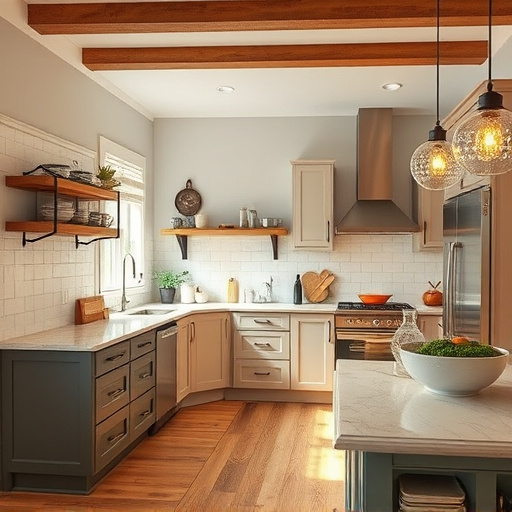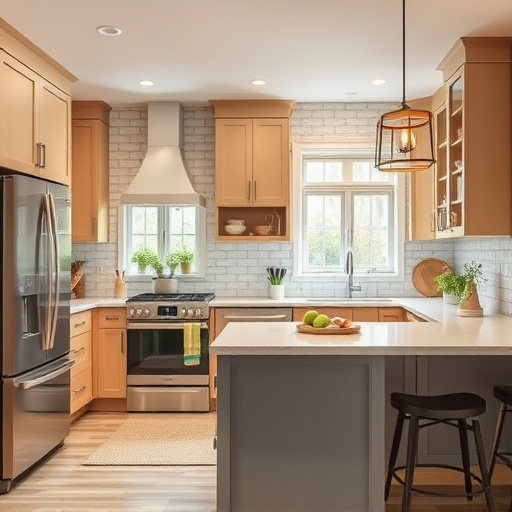Before adding a kitchen island as part of kitchen renovations, carefully assess your current space, measurements, and daily routines. Measure walls, cabinets, and appliances, analyze traffic flow, and consider how an island can enhance functionality, cater to family needs, and align with your culinary zone's dynamics. This strategic approach ensures the new addition seamlessly fits into your space, creating a tailored, inviting culinary hub.
Consider a kitchen makeover with the addition of an island—a versatile feature that can transform your space. This guide explores how a strategic kitchen island renovation can enhance both functionality and aesthetics. We’ll walk you through assessing your existing layout, understanding the advantages, and designing an island tailored to your needs. From optimizing workspace to accommodating seating, discover how this design element can revolutionize your culinary experiences, making everyday tasks more efficient and enjoyable in any kitchen renovation project.
Assessing Your Kitchen Space and Needs

When considering a kitchen island addition, the first step is meticulously assessing your current space and needs. Kitchen renovations are a significant investment, so understanding the dynamics of your culinary zone is crucial. Measurements are key – take note of both the available square footage and the flow of traffic in your kitchen. Consider the current layout and how an island could either enhance or disrupt it. For instance, if your kitchen lacks sufficient counter space but has ample wall space, a custom-fitted island might be an ideal solution.
Think about your daily routines and how an island could cater to them. Do you often prepare meals for a large family? An island with seating built-in can double as a meal preparation area and dining spot. Are you a social host who loves entertaining? Consider islands with ample workspace for serving food or setting out snacks, paired with bar stools for informal gatherings. Your needs will guide the design and functionality of this new addition to your kitchen space.
– Measuring and analyzing your current kitchen layout

Before adding a kitchen island, it’s crucial to measure and analyze your current layout. This step is essential in ensuring the new addition seamlessly fits into your space and enhances your existing kitchen dynamics. Start by mapping out your kitchen’s dimensions, noting obstacles like walls, cabinets, and appliances. Consider traffic flow – where people move when entering or exiting the kitchen, and where they gather for meals or preparation.
Understanding these aspects will help you make informed decisions about island size, placement, and functionality. For instance, a larger island might offer more workspace but could limit movement if not strategically positioned. Kitchen renovations are about creating a functional and inviting space, so take your time to get the measurements right and plan an arrangement that works best for your family’s needs and your kitchen’s unique layout.
Adding a kitchen island is an excellent way to enhance both functionality and aesthetics in your space. By carefully assessing your kitchen’s layout and understanding your needs, you can create a tailored solution that provides extra workspace, seating, and even storage. Kitchen renovations don’t have to be daunting; with the right planning, a kitchen island can become the centerpiece of your culinary creations, bringing people together and transforming your cooking experience.
